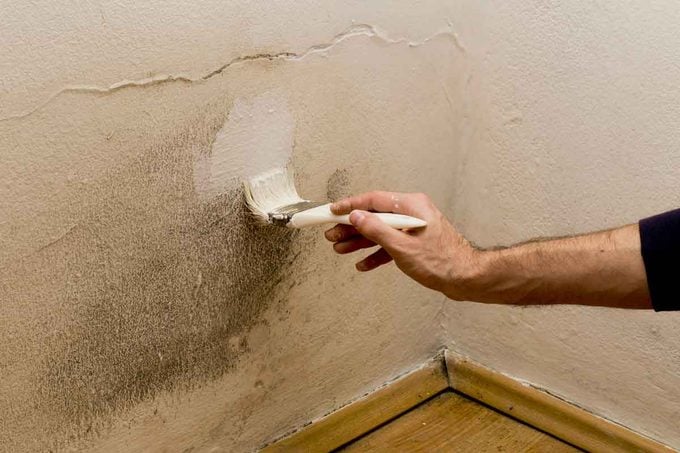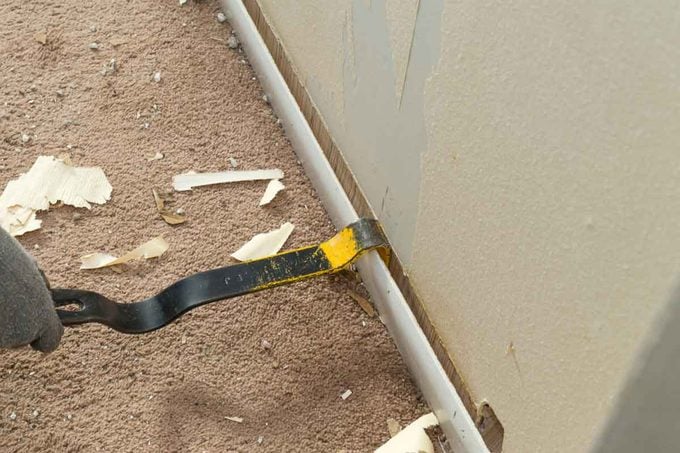10 Tricks Sellers Use to Pass Home Inspections
Updated: Sep. 01, 2023

Here's how to outsmart sellers who use sneaky tricks to pass home inspections.
Buying a home may be the biggest purchase you’ll ever make. So it makes sense to do everything possible to ensure you’re making a sound investment. Unfortunately, that can be difficult when unscrupulous sellers use tricks to pass home inspections. Here are the 10 most common tricks, and how you can outsmart each one.
On This Page
Painting Over Problem Areas

Fresh paint itself is not a sign of dishonesty, but it can be used to cover water stains, mold and more. “Many honest sellers use paint to update or freshen up walls,” says Nick Gromicko, founder of the International Association of Home Inspectors. “I’d just take note if many areas were recently painted and mention that to your home inspector.” You can also ask the seller for before-and-after photos.
Remaining in the Dark About Potential Problems
By law, a seller cannot be held liable for problems he or she didn’t know about. Thus, many sellers won’t have mold or radon tests performed when it’s time to sell. Some will even tell potential buyers they don’t want to know what the home inspection reveals. This is all the more reason to get a thorough home inspection that includes mold and radon tests.
Not Mentioning Issues by Former Occupants
Rental homes tend to take more of a beating than owner-occupied homes. And a flipped home may have been in really rough shape before renovations occurred.
Downplaying Any Concerns You Raise
Consider it a red flag if a seller brushes aside your questions. Sellers often do this when they don’t want to admit they haven’t kept up with maintenance and repairs. If a seller minimizes issues, check for signs of spotty maintenance like old air filters, broken appliances and crumbling masonry. You can also ask for documentation that repairs were performed.
Strategically Placing Decor Over Problem Areas
Sneaky sellers will block problem areas with artwork, shelves and furniture. Others, Gromicko says, may stack moving boxes around areas they don’t want potential buyers to see. Take note of any furniture or decor that seems out of place, and don’t be afraid to ask the seller to move anything so you can see things with your own eyes.
Disguising Problems With New Carpet
“Carpet can reveal a lot — if there were pets in the house, if a sewage backup occurred or if the house had mold,” says Gromicko. Like adding a fresh coat of paint, new carpet does not necessarily mean a seller is trying to hide something. But the chance always exists that they might. That’s why it pays to carefully read over the seller disclosure to learn about any known issues with the house.
Using New Construction as a Decoy
Notice lots of new drywall and other signs of a recent renovation? If so, you might want to ask the seller why and give your home inspector a head’s up. Dishonest sellers will often go on a home improvement spree to camouflage issues. Fortunately, a good home inspector will still spot them. “Hire a certified master home inspector,” says Gromicko, who notes that some states have no or very little licensing requirements for home inspectors. A certified master home inspector has at least three years of experience, and has completed at least 1,000 fee-paid inspections and/or hours of training and education combined.
Removing Evidence of Damage

Some of the ways sellers hide damage from water, termites and more is by removing any sign of trouble, such as damp cardboard boxes and termite-damaged baseboards. Because there’s no way to detect issues if a seller removed the evidence, Gromicko suggests hiring a home inspector who uses an infrared camera. “An infrared camera can detect mold, overheated wires, termite damage and water damage,” according to Gromicko.
Playing “Dumb”
Some sellers will say they can’t remember when something like the roof was replaced. Others will give you a ballpark guess. And still others, like flippers, will claim they never lived in the house and don’t know. In these instances, push for answers and consider making needed disclosures a part of the purchase. Your home inspector can tell you the age of appliances, systems and structural components and when they’ll need to be replaced.
Restricting Access
Sellers with something to hide will sometimes bar access to attics, circuit breakers, crawl spaces, sump pumps and more. Restricting access to you or your home inspector is a big red flag. Definitely think twice about doing business with anyone who won’t give you an unfettered look at a house you’re considering.
